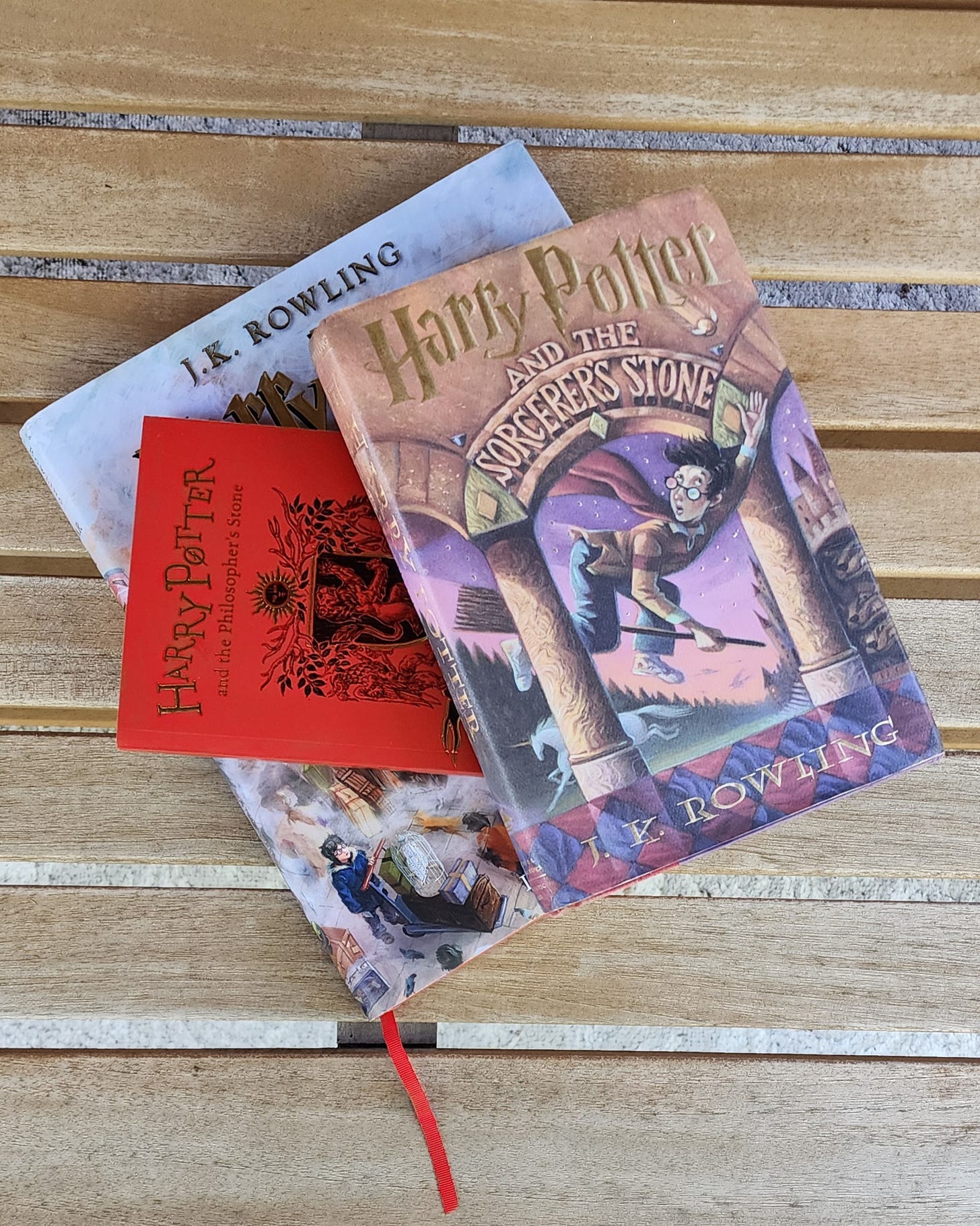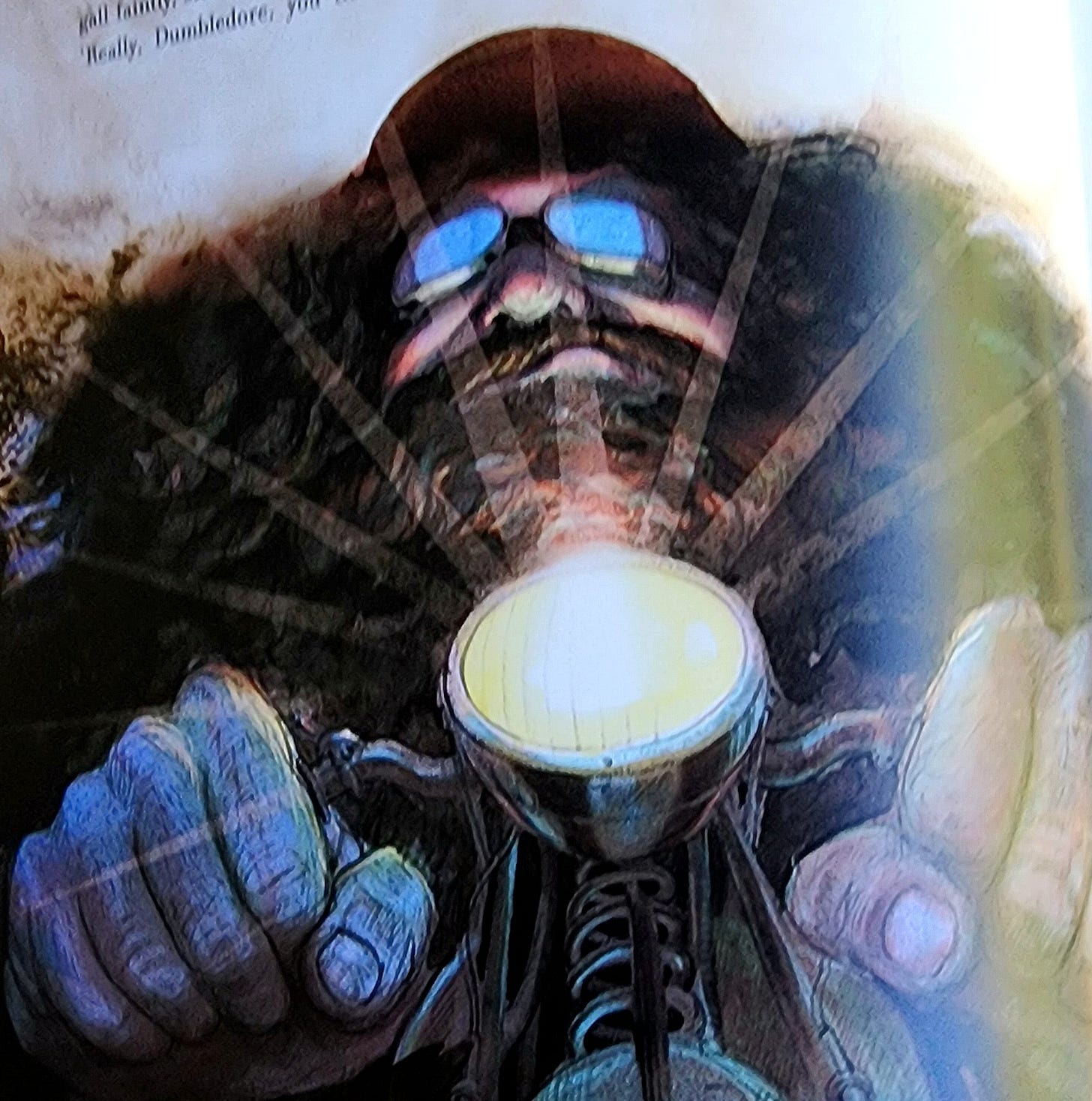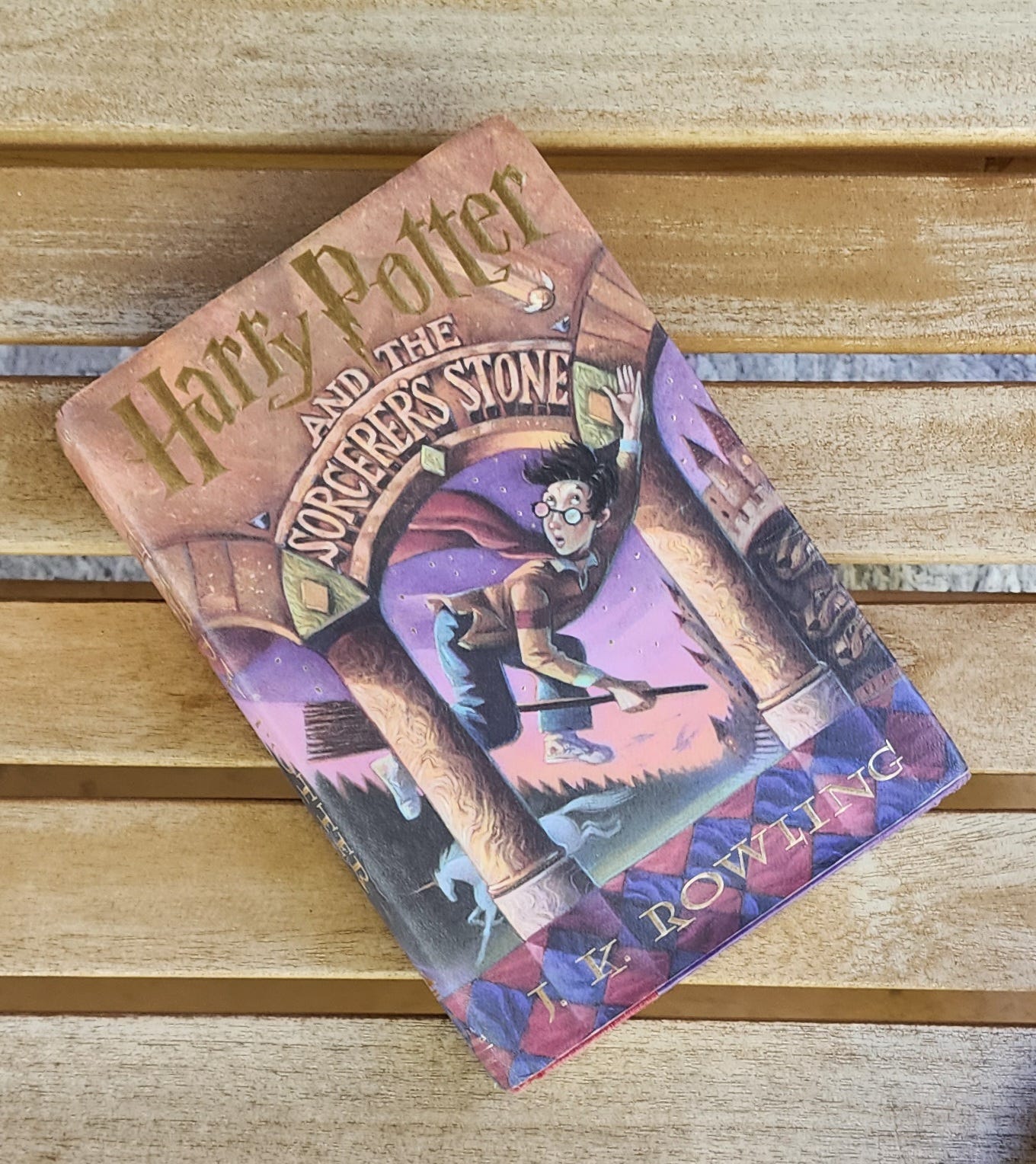Welcome back to the Harry Potter Unlocked series where I dissect one of the most popular books of all time, Harry Potter and the Sorcerer’s Stone. Today we’re covering the second scene of the book which takes us to the end of Chapter 1, The Boy Who Lived.
If you haven’t read the previous posts in this series, you can find links to those below. The Introduction post includes the project schedule in case you would like to start reading along!
The second scene in the books clocks in at just over 2,500 words and begins from the line, “Mr. Dursley might have been drifting into an uneasy sleep […].” This makes it a little longer than the first scene so it takes just over five minutes to read through silently; ten minutes to read aloud to your kids.
Much like the first scene, this one brims with essential details, introducing us to intriguing characters, accessible world-building, and fascinating backstory. Readers can't help but be drawn in, eager to uncover the fate of young Harry. Let’s get started.

Strange occurrences on Privet Drive
After the Dursleys go to bed, strange people akin to those Mr. Dursley encountered earlier in the day arrive outside of Number 4. One pops into existence out of nothing and one transforms into a woman from a cat. We learn that these people are Albus Dumbledore and Professor McGonagall.
Dumbledore confirms that certain rumors which McGonagall has overheard are true. Indeed, You-Know-Who has killed Harry’s parents and then disappeared powerless after he failed to do the same to Harry.
Dumbledore is resolved to leave the baby Harry with the Dursleys over McGonagall’s strenuous objections. A huge, hairy man called Hagrid arrives on a flying motorcycle with Harry. The three adults then somberly depart, leaving Harry on the Dursley’s doorstep with an explanatory letter.
He couldn’t know that at this very moment, people meeting in secret all over the country were holding up their glasses and saying in hushed voices: ‘To Harry Potter - the boy who lived.’ - pg. 18
An introduction of the most unDursleyish characters
Rowling really switches gears in the second scene as compared to the first. Notice that the main characters in this scene are all very strange and mysterious rather than “perfectly normal, thank you very much.” Three major characters are introduced here that will remain with us for the rest of the series. Well, mostly.
Professor McGonagall - We find out that the strange cat from the first scene is really a rather severe-looking, bespectacled woman in disguise. Notably, we are not given her first name or any clarification on what type of professor she is. She is known primarily, even to Dumbledore, by her title.
Albus Dumbledore - This guy pops “out of the ground” and is described as thin and very old, with long grey hair and beard. His dress is even more eccentric than the other strange people that we’ve met in this chapter: long robes, a purple cloak, and high-heeled boots with buckles.
Hagrid - Huge. Twice as tall and five times as wide as a normal man. “Too big to be allowed.” Wild. By his descriptions, and his arrival on a flying motorcycle, Rowling creates an image of a rather intimidating figure. However, we quickly learn that this is a gentle giant whom Dumbledore would trust with his life.
Rowling employs a rather nice worldbuilding trick in this scene that serves to further immerse us readers. She has Dumbledore and McGonagall casually refer to other people and places in their world that we have yet to encounter. This gives the illusion of a much bigger world out there, but avoids lengthy or tedious explanations that middle-grade readers are unlikely to suffer through. Along with mentioning Godric’s Hollow, a place we will not encounter for many books, they mention the following characters:
Madam Pomfrey - we learn nothing about her other than she complimented Dumbledore’s earmuffs once.
Dedalus Diggle - Again, we learn basically nothing about him except that McGonagall does not think he possesses much good sense.
Sirius Black - All we learn about Sirius at this point is that he is young and he loaned Hagrid his flying motorcycle. This gives us a hint at Sirius’s true nature before he becomes the primary (red herring) antagonist in Book 3.
Lily and James Potter - We finally learn the first names of Harry’s parents. By giving us these names through Dumbledore and McGonagall, Rowling indicates a level of familiarity that they have with the Potters which the Dursleys lack. Another clever writing trick. Thus, we know that in this scene we’re peaking into the world that the Dursleys despise so much.
The final bit of character information we get in this scene will be vastly important for the rest of the series - a clarification of who You-Know-Who actually is. It’s notable that Rowling introduces this villain to us readers before she introduces him to Harry. When your audience is middle-grade readers, it can be helpful to give it more information than the main protagonist to help draw readers into the story early on.
Voldemort - You-Know-Who’s chosen name. Even McGonagall, a severe and competent professor, is afraid to even speak this name. Voldemort is a killer. He killed Harry’s parents and many others before. He tried to kill Harry, a baby. That is the kind of villain we’re dealing with in this series. Even though this is a children’s book, the stakes are real. Dumbledore is the only person that Voldemort is rumored to have ever been frightened of.
A quick note on the name Voldemort
Loosely translated from French, the name ‘Voldemort’ means “flight of death,” or “flight from death.” Like many authors before her, Rowling’s chosen character names represent certain traits that those characters possess.
Rowling has stated that this name reflects Voldemort’s desire for immortality and his overall connection with death. This trait is further developed in future books of the series, particularly book six.
The world of Magic
This scene introduces us to several instances of what we’ll later learn is called magic. However, Rowling is still keeping her introductions to magical concepts very simple and using minimal new vocabulary. Words like ‘deluminator,’ ‘apparition,’ ‘animagus,’ and ‘transfiguration’ are not mentioned in this scene even though each of the concepts are shown.
Ultimately, we will learn more about these concepts along with Harry as the series progresses. For now, we are just dipping our toes into the magical world. Again, we understand a little more than Harry does at this point making us excited to see his reactions as we read on.
A couple of excellent literary touches
Dumbledore putting out all of the street lights at the beginning of the scene is incredibly cinematic. This draws readers in by promising to reveal secrets; stuff we’ve been wondering about since page one. We’re all Muggles. What are these strange people doing while we’re not watching? We must keep reading to find out what goes on in the shadows. Then, at the end of the scene - poof! - all the lights are returned and Muggle life carries on as normal.
Another nice touch from this scene is Dumbledore pondering his golden watch.
It was a very odd watch. It had twelve hands but no numbers; instead, little planets were moving around the edge. It must have made sense to Dumbledore, though […] - pg. 13
This charming interlude reveals much about Dumbledore as a character. Upon first reading this passage, I thought it was a little out of place. After wrestling with it a bit, I love it.
Earlier in the scene, Dumbledore is portrayed as rather aloof and whimsical (e.g., constantly fiddling with and eating sherbet lemons). This little diversion with the watch shows us that there’s actually much more to him; perhaps a competence that others don’t have. He understands things that we don’t. He sees more than we see.
It shows us something else too. This watch, plus his use of the ‘Put-Outer’ demonstrate that Dumbledore possesses gadgets that other magic-users do not. This will come up time and again in this series.
The scene-setting effect of the use of the ‘Put-Outer’ along with Dumbledore’s watch are my two favorite literary flourishes from this chapter. These types of things really aid in our immersion into the world and our understanding of key characters. Good stuff, entertaining even for adult readers.
Other Interesting Tidbits
McGonagall seems extremely preoccupied that Muggles will find out about the magic-users, but Dumbledore doesn’t seem too concerned. How will this come up later?
We get hints in this chapter that Dumbledore may be a bit too optimistic, sometimes bordering on naïve. He suggests that just because he wrote the Dursleys a letter that they will explain everything to Harry. He trusts a giant to fly a baby on a motorcycle. Rowling is doing a great job of setting readers up to sometimes doubt Dumbledore’s judgment. This will make it difficult to trust his confidence in Snape throughout the series.
There is a nice bit of foreshadowing in this scene as Dumbledore remarks about the usefulness of scars. Harry’s scar will become an integral plot device throughout the series.
Lastly, I find this scene to be incredibly touching as I read it now as an adult. We see three grown magic-users gazing upon this bundled baby on a doorstep and all three of them are crying. A day of celebration turned bittersweet.
Conclusion
We’ve finished Chapter One! Rowling introduced us to so much content in less than 5,000 words. We’ve been introduced to at least eight major characters, we’ve been immersed in a world different than our own, and we’ve started to see how the use of magic fits into that world.
What did you think of The Boy Who Lived? What would you change about it if you were writing it? What’s your favorite part? Least favorite? Let me know.
Please like this post and subscribe if you are enjoying this series. If you’re looking for a way to support this Substack without a paid subscription, consider shopping at my online Bookshop. Linked here, you can find affiliate links for all of my favorite books (including a Harry Potter booklist). There’s also a list of spooky books to read in October!
Every time you purchase a book from the Better Books Bookshop, you not only help me out, you help out local bookstores everywhere.
My analysis of Chapter 2, The Vanishing Glass is out now!
Harry Potter Unlocked - Chapter 2
Welcome back to the Harry Potter Unlocked series where we’re deep-reading one of the most popular books of all time, Harry Potter and the Sorcerer’s Stone. Today we’re covering Chapter 2, The Vanishing Glass.
Happy Reading!








Albus Dumbledore: "Yes. He'll have that scar forever."
Minerva McGonagall: "Couldn't you do something about it, Dumbledore?"
Albus Dumbledore: "Even if I could, I wouldn't. Scars can come in handy. I have one myself above my left knee that is a perfect map of the London Underground."
I had been reading Alchemy influenced literature when I first encountered this line and immediately thought of TS Eliot’s Four Quartets, where Eliot uses the Underground as a symbol of the fallen state of the seeker beginning the Nigredo. I wondered if Rowling really intended that; although the title certainly primed the reader for Alchemical references Eliot seemed pretty highbrow for YA fantasy. Then we got Hedwig from Ibsen and Hermione Granger (HG a double mercury reference) and it became clear that whatever else might be going on, Rowling was deeply engaging with the entire canon of Western esoterica.